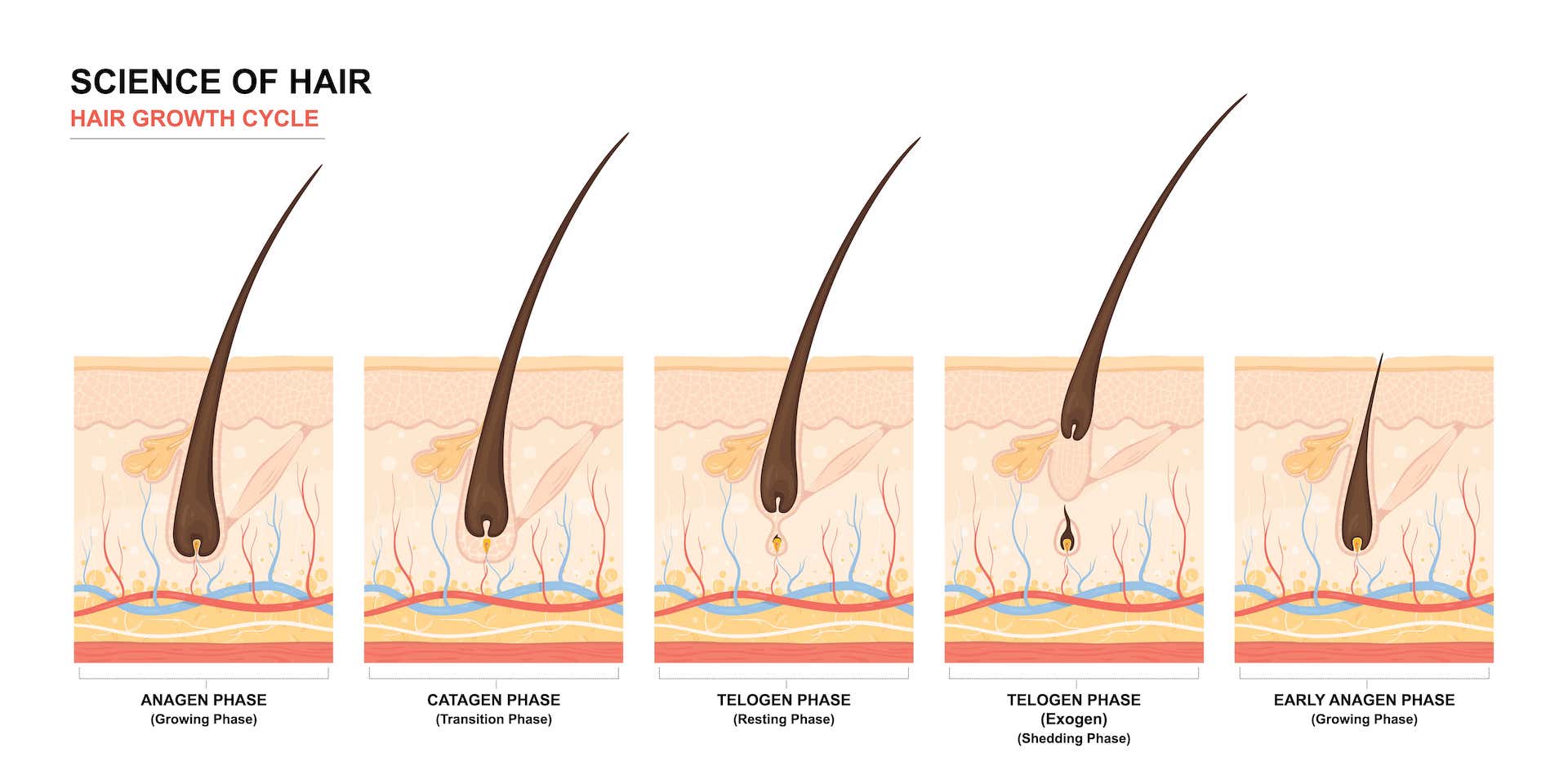Hair Anatomy
Hair is the most attractive part of the human body, where structure and growth are a fascinating process. Losing hair is a common and natural thing, essentially part of the ordinary cycle. But if it's beyond normal, you may have a medical condition or an unidentified cause that needs to be resolved. Maintaining a fabulous and healthy hair has many aspects; it's much more complex than we think.
Let us study about hair anatomy: We all know that the structure of hair is simple, but do you know? It has significant social functions besides hair is made of a tough protein called keratin and its hair follicle anchor each hair into the skin.
The round bottom hair bulb forms the hair follicle base. Living cells split and develop in the hair bulb to construct the hair shaft. Visible hair is the shaft of the hair. Blood vessels nourish the hair bulb cells and provide nutrients that alter hair development and structure at distinct stages of life.
People may believe that hair is distinct in each gender, but they did not understand that there is no unique difference between masculine and female hair because of it's type.

Do you know?
"A strand of hair is stronger than a copper wire with the same diameter"
The growth cycle of hair: To recognize and understand many of the problems with the hair, it is very important to understand the hair growth process/phase.
There are three significant stages in the development cycle. The first stage is called the phase of Anagen, hair develops actively during the phase of Anagen and it can last for years. Hair bulbs grow each month in centimeters until they reach their optimum. During the Catagen phase, the second stage is called Catagen; hair stops growing and separates from its follicle, which is the structure under the skin that holds the hair in place. The stage of Catagen is much shorter and only takes 2 weeks or one month. Also known as the transition stage, the blood supply is separated from the root and stops growing. The third stage is called Telogen, the follicle stays for two or three months during the Telogenic phase, and then the hair falls. In 3 months ' time, the hair will separate naturally from the scalp. The next phase of Anagen starts with a new hair growing in the same follicle. This entire phase of hair growth is a natural cycle in which hair falls after a certain period and then naturally regenerates.

Complications and its solution: As part of this natural cycle, most people lose 50 or 100 hair per day. When this cycle is disturbed or if a hair follicle is damaged, hair may begin to decrease faster than regeneration, resulting in symptoms such as hair loss, hair drops out in patches or overall dilution. Hair in various individuals grows at various rates; the average per month is around 1⁄2 inch. The pigment cells that produce melanin in the hair follicle produce hair color. Pigment cells die as they age, and the hair becomes gray.
To grow healthy and natural hair in this modern age, we need expert advice, why not? Book an appointment at your neighboring VCare hair care clinic and begin growing healthy and natural hair.


 Our Location
Our Location
